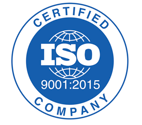
Whether your company manufactures pharmaceuticals or medical devices, your goal as a Quality manager should be to create a culture of quality so that your company can do all it can to avoid the inconvenience and costly burden of dealing with an FDA 483, consent decree, warning letter, or product recall.
While it is important to plan ahead for a remediation project, it can also be beneficial to pay attention to other FDA Warning Letters that have gone out to other companies in your field. Fortunately, the FDA makes these letters public, which gives you the unique opportunity to not only see what areas the FDA may be concentrating on but to also learn from your peers' adequate or inadequate responses. Below is a roundup of warning letters and FDA 483 letters sent to pharmaceutical and medical device manufacturers during the month of July 2017.
Sage Products: The U.S. Food and Drug Administration (FDA) inspected your drug manufacturing facility Sage Products Inc. at 3909 Three Oaks Road, Cary, Illinois, from June 2 to September 1, 2016.
1.The inspection revealed that their methods, facilities, or controls for manufacturing, processing, packing, or holding do not conform to CGMP, therefore making their drug products adulterated within the meaning of section 501(a)(2)(B) of the Federal Food, Drug, and Cosmetic Act (FD&C Act), 21 U.S.C. 351(a)(2)(B).
2. The firm failed to establish scientifically sound and appropriate sampling plans and test procedures designed to assure that in-process materials and drug products conform to appropriate standards of identity, strength, quality, and purity (21 CFR 211.160(b)).
3. The firm failed to clean, maintain, and, as appropriate for the nature of the drug, sanitize and/or sterilize equipment and utensils at appropriate intervals to prevent malfunction or contamination that would alter the safety, identity, strength, quality, or purity of the drug product beyond the official or other established requirements (21 CFR 211.67(a)).
The FDA concluded that the violations cited in the FDA 483 letter are not intended as an all-inclusive list and Sage Products is responsible for investigating these violations, for determining the causes, for preventing their recurrence, and for preventing other violations in all facilities. Failure to correct all violations may result in seizure and injunction and the FDA may withhold approval of pending drug applications listed at the facility. (Source)
Whitehall division of Acorn Engineering Co: During an inspection of their firm located in City of Industry, California, from March 6 through March 23, 2017, an investigator from the United States Food and Drug Administration (FDA) determined that the firm manufactures whirlpool immersion hydro therapy devices and dry heat therapy devices. Under section 201(h) of the Federal Food, Drug, and Cosmetic Act (the Act), 21 U.S.C. § 321(h), these products are devices because they are intended for use in the diagnosis of disease or other conditions or in the cure, mitigation, treatment, or prevention of disease, or to affect the structure or any function of the body.
This inspection revealed that your hydro therapy devices and dry heat therapy devices are adulterated within the meaning of section 501(h)[21 U.S.C. § 351(h)] of the Act, in that the methods used in, or the facilities or controls used for their manufacture, packing, storage, or installation are not in conformity with the Current Good Manufacturing Practice (CGMP) requirements for devices which are set forth in the Quality System Regulation, as specified in Title 21, Code of Federal Regulations, Part 820.
The violations include, but are not limited to, the following:
1. Failure to adequately establish procedures for receiving, reviewing, and evaluating complaints by a formally designated unit, as required by 21 CFR 820.198.
2. Failure to investigate the possible failure of a device to meet any of its specifications where necessary, as required by 21 CFR 820.198(c).
3. Failure to establish a design history file, as required by 21 CFR 820.30(j).
4. Failure to adequately establish procedures for design change, as required by 21 CFR 820.30(i).
5. Failure to adequately establish procedures for design transfer, as required by 21 CFR 820.30 (h).
6. Failure to adequately maintain a device master record, as required by 21 CFR 820.181.
7. Failure to validate a process whose results cannot be fully verified by subsequent inspection and test according to established procedures, as required by 21 CFR 820.75(a).
8. Failure to maintain a device history record, as required by 21 CFR 820.184.
9. Management with executive responsibility has not reviewed the suitability and effectiveness of the quality system at defined intervals and with sufficient frequency, as required by 21 CFR 820.20(c).
10. Failure to adequately establish procedures for training and identifying training needs, as required by 21 CFR 820.25(b).
Our inspection also revealed that the firm’s immersion hydrobaths are misbranded under Section 502(t)(2) of the Act, 21 U.S.C. § 352(t)(2), in that the firm failed or refused to furnish material or information regarding the devices that is required by or under Section 519 of the Act, 21 U.S.C. § 360i, and 21 CFR Part 803 – Medical Device Reporting. Significant deviations include, but are not limited to:
1. Failure to develop, maintain and implement MDR procedures as required by 21 CFR 803.17.
The FDA reviewed the company’s response dated April 13, 2017 and finds it inadequate. The firm developed and submitted a copy of its MDR procedure titled: “Medical Device Reporting (FDA,)” SOP-QC-08, Revision A, dated March 17, 2017. After reviewing your firm’s MDR procedure, the following issues were noted: SOP-QC-08, Revision A does not establish internal systems that provide for timely transmission of complete medical device reports. Specifically, the following are not addressed:
a. The procedure does not include a reference for the submission of MDR reportable events using the mandatory 3500A or electronic equivalent.
b. Although the procedure includes references to 5 day reports, it does not specify work days, respectively.
c. How the firm will submit all information reasonably known to it for each event. Specifically, which sections of the 3500A will need to be completed to include all information found in your firm’s possession and any information that becomes available as a result of a reasonable follow up within its firm.
The firm should also adjust its MDR procedure accordingly to include a process for submitting MDRs electronically in accordance with the Final Rule for electronic Medical Device Reporting (eMDR) published in the Federal Register on February 14, 2014.
2. Failure to report no later than 30 calendar days after the day that the firm received or otherwise became aware of information, from any source, that reasonably suggests that a device that the firm markets has malfunctioned and this device or a similar device that it markets would be likely to cause or contribute to a death or serious injury, if the malfunction were to recur, as required by 21 CFR 803.50(a)(2).Failure to promptly correct these violations may result in regulatory action being initiated by the FDA without further notice. These actions include, but are not limited to, seizure, injunction, and civil money penalties. (Source)
Reviewing real life warning letters and their responses can be a key measure to ensuring that your company is well prepared should an FDA warning letter be received. It is also important to review their findings with your staff so that they can be aware of areas where mistakes can be prevented but to also get a feel for what roles your current staff would manage should a remediation occur and if outside resources may be necessary.




